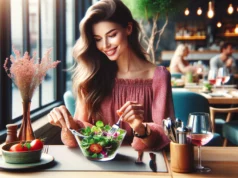Cell line development is a crucial step in many areas of scientific research and biotechnology. Whether you’re working on drug discovery, biopharmaceutical production, or basic biological research, having well-characterized and stable cell lines is essential. In this article, we will explore the best practices and techniques for mastering cell line development, providing you with valuable insights and tips to enhance your workflow.
1. Introduction to Cell Line Development
Before diving into the details, let’s start with a brief introduction to cell line development. Cell lines are populations of cells derived from a single cell, typically obtained from tissue samples. These cells are immortalized and can be grown indefinitely in culture, making them invaluable tools for scientific experimentation and applications.
2. Selecting the Right Cell Line
Choosing the appropriate cell line for your specific research needs is the first step towards successful cell line development. Consider factors such as the cell type, growth characteristics, and functional properties required for your experiments. Some widely used cell lines include HEK293, CHO, and HeLa, each with its own advantages and limitations.
3. Cell Line Authentication
Maintaining the authenticity and identity of cell lines is crucial to avoid cross-contamination and ensure reliable experimental results. Implementing cell line authentication techniques, such as DNA profiling or short tandem repeat (STR) analysis, can confirm the uniqueness of your cell line and prevent misidentification.
4. Optimizing Cell Culture Conditions
Creating an optimal environment for cell growth is essential for successful cell line development. Pay close attention to parameters such as temperature, pH, nutrient composition, and the presence of growth factors. Regularly monitor cell viability, proliferation rates, and confluency to ensure optimal conditions are maintained throughout the culturing process.
5. Genetic Stability and Clonal Selection
Maintaining genetic stability is vital to ensure reproducibility and consistency in cell line performance. Monitor genetic changes using techniques like karyotyping or comparative genomic hybridization (CGH). Additionally, perform clonal selection to isolate single-cell clones with desired traits, reducing heterogeneity and ensuring a more uniform cell population.
6. Cryopreservation and Long-term Storage
Establishing a reliable cryopreservation protocol is essential for long-term storage of cell lines. Cryopreservation techniques, such as slow freezing or vitrification, protect cells from damage caused by ice crystal formation. Properly storing frozen cell stocks at ultra-low temperatures (-80°C or liquid nitrogen) ensures their viability and availability for future experiments.
7. Mycoplasma Detection and Prevention
Mycoplasma contamination can significantly impact cell line integrity and experimental outcomes. Regularly screen cell lines for mycoplasma using sensitive detection methods, such as PCR or fluorescent staining. To prevent contamination, practice strict aseptic techniques, use sterile reagents, and implement routine cell line passaging schedules.
8. Scale-Up and Bioproduction
If you’re working on large-scale production of recombinant proteins or biopharmaceuticals, efficient scale-up processes are essential. Gradually transitioning from small-scale to larger-scale cultures allows optimization of growth conditions, ensuring high yields and product quality. Monitor cell density, metabolic parameters, and bioreactor conditions during the scale-up process.
9. Documentation and Record Keeping
Maintaining detailed and accurate records throughout the cell line development process is crucial. Document key steps, including cell origin, passage history, culture conditions, and any modifications made. These records serve as a valuable reference for troubleshooting, quality control, and regulatory compliance.
10. Continuous Learning and Collaboration
Cell line development is a dynamic field with ongoing advancements and emerging technologies. Stay updated with the latest research, attend conferences, and engage in scientific collaborations. Networking with experts and sharing knowledge fosters continuous learning and can lead to breakthroughs in your cell line development endeavors.
In conclusion, mastering cell line development requires careful consideration of various factors, from selecting the right cell line to optimizing culture conditions and ensuring genetic stability. By implementing best practices and staying informed about the latest techniques, you can enhance the reproducibility and reliability of your experiments, ultimately accelerating scientific progress and biotechnological advancements.












